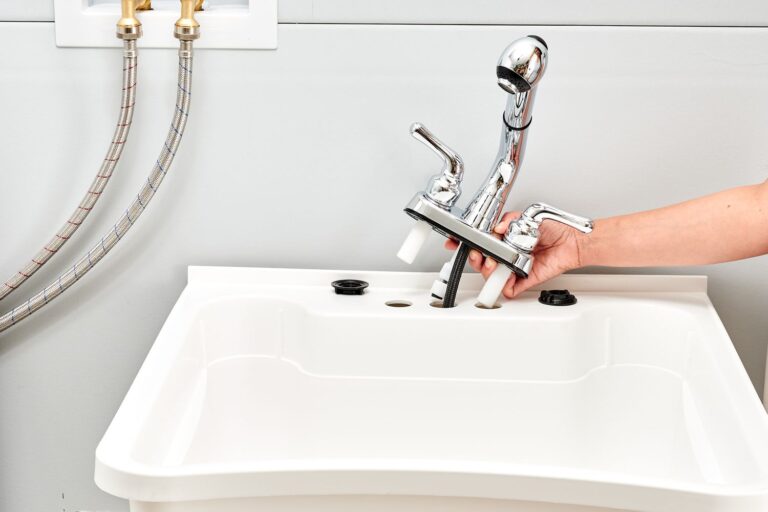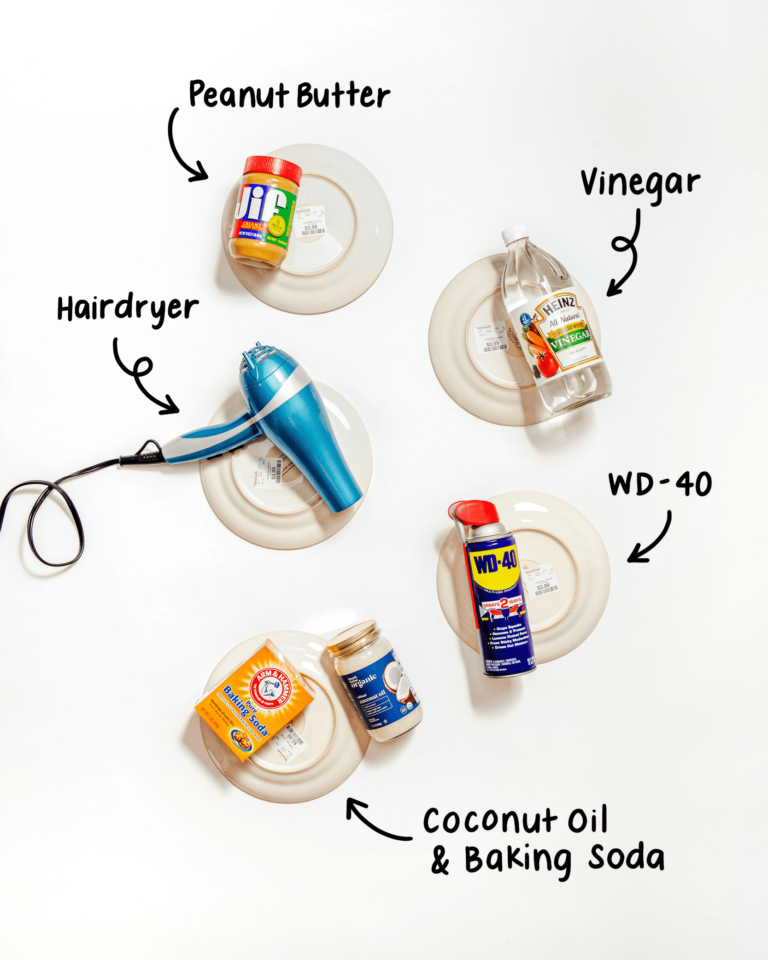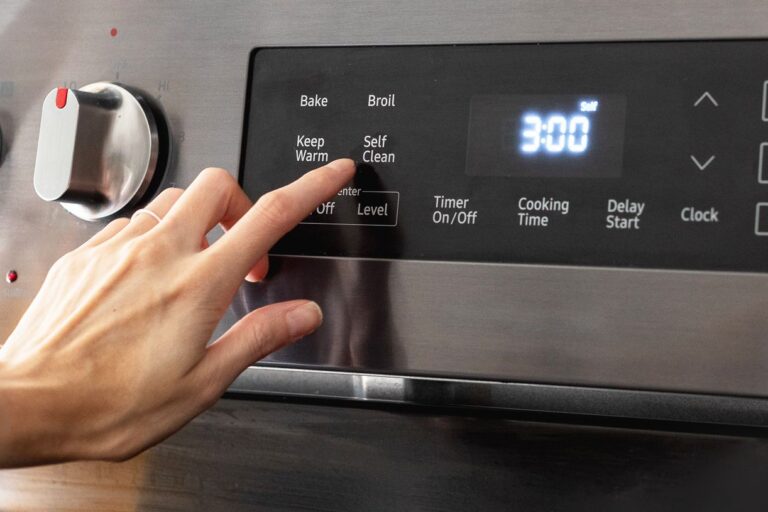Can Vinegar And Baking Soda Ruin Stainless Steel?
Vinegar and baking soda are both widely used common household items that are often used to clean and disinfect various surfaces throughout the home. While these two substances are generally safe to use on most surfaces, they can cause damage to stainless steel if not used properly. Vinegar and baking soda can cause corrosion, staining, and pitting on stainless steel if left on the surface for too long or used in a high concentration. Therefore, it is important to use these two cleaning agents with caution when it comes to stainless steel surfaces.
What is Stainless Steel?
Stainless steel is one of the most popular materials used in a variety of industries, from food and beverage production to construction and manufacturing. It is a durable metal alloy made up of chromium, iron, nickel, and other elements, and is highly resistant to corrosion and rusting. This makes it an ideal material for sinks, appliances, kitchen countertops, and other items that need frequent cleaning and exposure to liquids. But can vinegar and baking soda, two common household items, damage stainless steel surfaces?
When it comes to cleaning stainless steel, vinegar and baking soda can be effective solutions. Vinegar is a mild acid that can help break down dirt and grime, while baking soda is a mild abrasive that can help remove stuck-on residue. However, it’s important to note that both vinegar and baking soda can be corrosive and cause damage to stainless steel surfaces if used incorrectly. If you decide to use either of these items to clean your stainless steel surfaces, make sure to use them sparingly and rinse the surface thoroughly when finished.
The Effect of Vinegar on Stainless Steel
Vinegar is a popular kitchen staple that can be used in many ways. It is a great natural cleaner and deodorizer, but is it safe to use on stainless steel surfaces? The answer is yes, but with some caution. Vinegar is acidic, and its acidity can cause corrosion on stainless steel and other metals. In order to protect your stainless steel surfaces, it is important to understand how vinegar can cause damage and how to use it safely.
Vinegar can cause corrosion on stainless steel because of its acidity. When vinegar comes in contact with stainless steel, it can react with the metal and create a weak acid. This reaction can cause corrosion on the surface of the stainless steel, leading to discoloration and pitting. Additionally, the acidity of vinegar can weaken the protective finish of stainless steel, making it more susceptible to rust and corrosion.
When using vinegar on stainless steel, it is important to dilute it with water and use a soft cloth. This will help reduce the amount of acidity on the surface and will help prevent corrosion. Additionally, it is important to rinse the stainless steel with water immediately after vinegar is applied. This will help remove any residue that may be left behind and will help protect the surface of the stainless steel.
In conclusion, vinegar can be used on stainless steel surfaces, but it is important to do so with caution. Diluting vinegar with water and rinsing the surface with water afterward can help protect the stainless steel from corrosion and rust. Understanding how vinegar affects stainless steel can help you keep your surfaces looking like new.
The Effect of Baking Soda on Stainless Steel
Stainless steel is one of the most popular materials used to make kitchen appliances, cutlery, and cookware. It looks great, is sturdy, and is highly resistant to corrosion and rust. However, many wonder if baking soda and vinegar can ruin stainless steel. The answer is yes, they can. Baking soda and vinegar can cause damage to stainless steel if used too often or in excessive amounts.
When baking soda and vinegar come into contact with stainless steel, they form a chemical reaction that causes a reaction between the metal and the ingredients, resulting in a corrosion of the steel. Baking soda and vinegar create an acidic environment, which can cause the metal to tarnish and weaken over time. This is why it is important to be careful when using baking soda and vinegar on stainless steel and to never leave them in contact with the metal for too long.
The damage caused by baking soda and vinegar on stainless steel can be difficult to repair. In some cases, the metal may be too corroded to repair and will need to be replaced. In other cases, a professional can restore the metal to its original condition.
Ultimately, baking soda and vinegar can cause serious damage to stainless steel if used in excess or left in contact with the metal too long. Therefore, it is important to be aware of how and when to use baking soda and vinegar on stainless steel in order to avoid any damage.
The Difference Between Vinegar And Baking Soda
Vinegar and baking soda are two common household ingredients that are often used for cleaning, deodorizing, and removing stubborn stains. But can they damage stainless steel surfaces? To understand the potential risks of using vinegar and baking soda on stainless steel, it’s important to know the difference between the two.
Vinegar is an acidic solution made from diluting acetic acid. This naturally occurring compound can be found in many fruits and vegetables, as well as in wine, beer, and other fermented beverages. Its acidic properties make it an effective cleaner and deodorizer, and it is often used to remove mineral deposits and soap scum from surfaces.
Baking soda, on the other hand, is an alkaline powder made from sodium bicarbonate. It is a mild abrasive that is often used to scrub away dirt and grime, and it can also be used to neutralize odors. Baking soda is an effective cleaning agent, but it is not as strong as vinegar, and it can be abrasive if used in too large of quantities.
Both vinegar and baking soda can be safely used on stainless steel surfaces, but it’s important to be careful when using them. Vinegar is more acidic than baking soda, so it can cause discoloration or etching on the stainless steel if it’s left on the surface for too long. Baking soda can be abrasive, so it should be used sparingly and only on stubborn stains. With the right technique, both vinegar and baking soda can be used effectively to clean stainless steel without damaging it.

How to Clean and Care for Stainless Steel
Stainless steel is one of the most popular materials used in kitchen appliances, dishware, and other home goods. It’s durable, easy to clean and maintain, and looks great. But, if you use the wrong cleaning products, you could end up doing more harm than good. Vinegar and baking soda are two common ingredients used for cleaning, but do they ruin stainless steel?
The answer is yes, if used in the wrong way. Vinegar and baking soda can both be corrosive to stainless steel if used together or in highly concentrated doses. To clean and care for stainless steel properly, it’s best to use a mild soap or detergent and warm water. For tougher spots, a soft cloth, non-abrasive scrubbing pad, or nylon brush should be used. Be sure to rinse the surface thoroughly after cleaning, and dry it with a soft cloth.
To preserve the shine and prevent scratches, it’s important to avoid using harsh abrasive cleaners. It’s also important to avoid leaving the stainless steel exposed to moisture for extended periods of time, as this can cause rust. In order to keep stainless steel looking its best, use a good quality stainless steel polish or wax occasionally.
In summary, it’s best to avoid using vinegar and baking soda to clean stainless steel, as they can both be corrosive. It’s important to use a mild soap or detergent and warm water to clean the surface, and to take extra care to avoid scratches and rust. Finally, use a quality stainless steel polish or wax now and then to preserve the shine.
Common Symptoms of Damage to Stainless Steel
Stainless steel is a strong and resilient material. However, if it is exposed to certain substances, it can be damaged irreversibly. Vinegar and baking soda are two substances that can have a detrimental effect on stainless steel. It is important to know the common symptoms of damage to stainless steel caused by vinegar and baking soda.
One of the earliest indications of damage to stainless steel caused by vinegar and baking soda is discoloration. This is due to the acids in the vinegar and the alkaline nature of baking soda. When these substances come into contact with the stainless steel, they can cause discoloration, usually in the form of rusting. It is important to note that rusting does not necessarily indicate a serious problem, but it is a sign that further investigation is needed.
Another symptom of damage to stainless steel caused by vinegar and baking soda is pitting. Pitting occurs when the surface of the stainless steel is pitted, usually in a small area. This can be caused by the acids in the vinegar and the alkaline nature of baking soda corroding the surface of the stainless steel. Pitting is often accompanied by corrosion, which can further damage the stainless steel.
Finally, another symptom of damage to stainless steel caused by vinegar and baking soda is corrosion. Corrosion is caused by the acids in the vinegar and the alkaline nature of baking soda eating away at the surface of the stainless steel. This can weaken the stainless steel and make it more prone to further damage.
In conclusion, vinegar and baking soda can have a detrimental effect on stainless steel. It is important to be aware of the common symptoms of damage to stainless steel caused by these substances. If you notice any of these symptoms, it is important to take action immediately to prevent further damage.
How to Repair and Restore Damaged Stainless Steel
Stainless steel is a popular choice for kitchen and bathroom fixtures because of its durability and versatility. However, its long-term performance may be compromised by damage caused by the use of certain cleaning products. Vinegar and baking soda, while often touted as natural cleaning solutions, can actually corrode stainless steel if used for extended periods of time. Fortunately, there are ways to repair and restore the surface of stainless steel, allowing it to once again look as good as new.
First, it’s important to understand why vinegar and baking soda can cause damage to stainless steel. Both are acidic, and when left on the surface for too long, they can corrode the protective layer and cause pitting and staining. To repair and restore the surface, begin by using a soft cloth and soapy water to remove the residue. Next, use a stainless steel cleaner to remove any remaining residue and restore the shine. Finally, use a polish to seal the surface and prevent further damage.
The best way to prevent damage to stainless steel is to avoid using vinegar and baking soda altogether. If you must use them, make sure to clean the surface with soapy water and a soft cloth immediately after use. Additionally, use a protective coating and polish regularly to help maintain the surface and prevent corrosion. By following these simple steps, you can keep your stainless steel looking like new for years to come.
Conclusion
Vinegar and baking soda have a wide variety of uses, but they should be used with caution when it comes to stainless steel. While these natural cleaning agents can be used safely on stainless steel, they should not be used with any abrasive materials or harsh chemicals. While vinegar and baking soda are effective in cleaning stainless steel, they should be used in moderation for best results. Additionally, it is important to rinse and dry the stainless steel thoroughly after use. When used correctly, vinegar and baking soda are a great way to keep your stainless steel looking its best and free of corrosion.
FAQs About the Can Vinegar And Baking Soda Ruin Stainless Steel?
1. Does using vinegar and baking soda on stainless steel surfaces cause any damage?
Answer: No, vinegar and baking soda are both safe to use on stainless steel surfaces. However, using too much of either or both can cause discoloration, so be sure to use them in moderation.
2. What should I do if I accidentally get vinegar or baking soda on my stainless steel?
Answer: If you accidentally get vinegar or baking soda on your stainless steel, rinse the surface thoroughly with warm water and a soft cloth or sponge. If the discoloration persists, you can try using a small amount of mild detergent or a stainless steel cleaner to remove it.
3. Can vinegar and baking soda be used to clean stainless steel?
Answer: Yes, vinegar and baking soda can be used to clean stainless steel surfaces. Mix equal parts baking soda and vinegar to create a paste, then apply the paste to the surface with a sponge or cloth. Allow the paste to sit for a few minutes before rinsing it off with warm water.
Conclusion
In conclusion, it is possible for vinegar and baking soda to ruin stainless steel if it is exposed to the mixture for an extended period of time. However, this is highly unlikely as stainless steel is a very durable material and should be able to withstand short-term exposure to these cleaning agents. If one is concerned about causing damage, it is best to rinse the stainless steel surface thoroughly with water after using vinegar or baking soda for cleaning.






